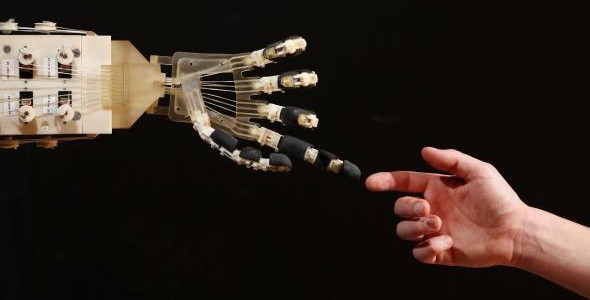The caregiver profession is often included among occupations that are safe from automation. This is due to the fact that caregivers must possess traits and skills that are uniquely human. However, a growing need for caregivers combined with a shortage of skilled workers in the profession has led to an increase in the investment and application of robotic caregivers, or care robots. So can automation fill this void or will we still need human caregivers?
Nations look to automation to provide care
The government of the United Kingdom is making a 5-year, $43.54 million investment to improve technologies for robots that could assist in providing care for humans. Care robots could help lift people after falling, deliver meals, ensure correct medication dosage, help carry out every day tasks — from grocery shopping to cooking to bill paying — improve mobility, and help with rehabilitation.
One of the reasons for this investment is that the United Kingdom is getting older; the UK government reports that one out of every seven citizens will be over the age of 75 in the next 20 years.
Japan has been dealing with the effects of an aging population for years. The number of elderly citizens who need care continues increasing while the Japanese workforce dwindles. Elder care takes twice the hit, and a shortage of caregivers is on the horizon. Japan expects a shortage of 380,000 specialized caregivers within the next five years.
In 2016, estimates suggested that 26% of Japan’s population was over the age of 65. The Japanese Ministry of Health, Labour and Welfare predicts that 40% of the population will be over the age of 65 by 2060.
Like the UK, Japan’s government has also been funding development for care robots to provide care for the elderly. You can already find robotic caregiver robots in Japanese nursing homes.
Are robots right for the job?
Hospitals, retirement communities, assisted living facilities, and individual homes could all put care robots to use. Can robots replace human caregivers?
Some research shows that machines can help reduce loneliness. However, this doesn’t mean that people would rather have robot caregivers. In fact, Her Majesty’s Royal Government reports public trust is a big obstacle to overcome with care robots.
The problem is that there aren’t enough workers to fill these positions, so automation seems like the next best thing.
One of the main reasons that caregivers are typically considered safe from robots and automation is that the profession requires high levels of human-specific skills that machines can’t truly replicate.
Caregivers need emotional intelligence, compassion, they need to listen, and show interest. They need to observe and adjust to a patient’s needs; caregivers must adapt and be flexible. These are things that robots can’t do. Some robots are programmed to artificially recreate these traits, but it’s still a far cry from the real thing.
Care robots can assist with lifting, carrying, time management, and help with communication. It’s entirely possible that the solution to the caregiver shortage isn’t complete automation, but instead human-robot collaboration. The need for human caregivers will remain, but perhaps cobots can assist human workers by doing the things that are difficult, physically demanding, and easily automated.
Automation is here to stay
We may see caregivers use automation in the same way that the manufacturing industry has made use of automation. Automation makes work less physically demanding, and more efficient. It maximizes the amount of work that individuals can do and oversee, and it improves quality and efficiency of the work that is performed. Automation also allows workers to focus on more meaningful types of work.
If you own an Indramat system, you know just how crucial automation is. Call 479-422-0390 for Indramat service and repair.



